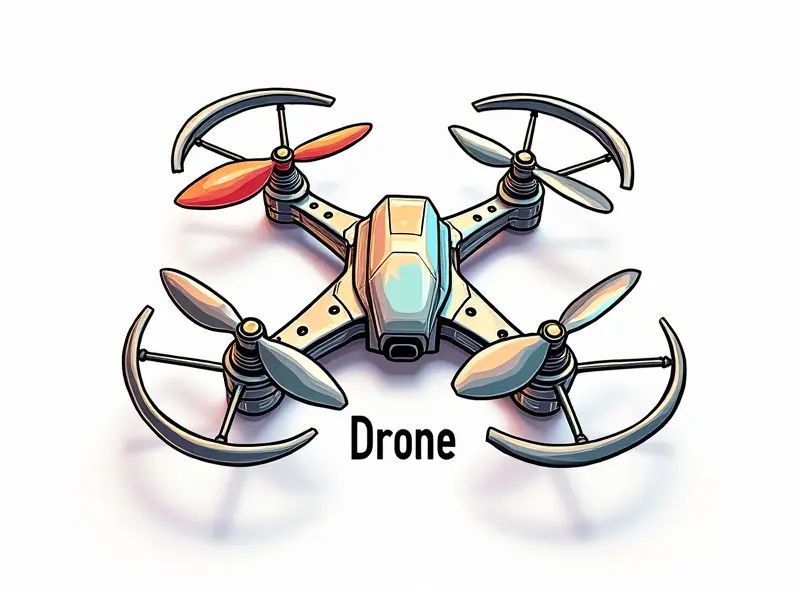How to size a BLDC motor?

Choosing the Right Size BLDC Motor
Selecting the appropriate size for a Brushless DC (BLDC) motor is crucial for ensuring optimal performance and efficiency in your application. The right sizing can significantly impact the longevity, power output, and overall effectiveness of the motor.
BLDC Motor Sizing Guide
A detailed sizing guide is essential for understanding how to select the most suitable BLDC motor for your project. Here are some key points to consider:
- Load Requirements: Determine the torque and speed requirements of your application.
- Operating Conditions: Assess environmental factors such as temperature, humidity, and altitude.
- Power Supply: Verify the voltage and current ratings to ensure compatibility with your power source.
Optimal BLDC Motor Size Selection
To select an optimal size for a BLDC motor, follow these steps:
- Analyze Application Needs: Understand the specific requirements of your application in terms of torque, speed, and power.
- Evaluate Environmental Factors: Consider the operating environment's impact on motor performance.
- Select Compatible Components: Ensure that all components are compatible with each other to avoid system failures.
How to Match BLDC Motor Size
Mismatching a BLDC motor can lead to inefficiency and reduced lifespan. Here’s how to match the right size of BLDC motor:
- Calculate Load Torque: Measure the torque required for your application.
- Determine Speed Requirements: Identify the necessary RPM range for optimal performance.
- Select Motor Type: Choose between permanent magnet and reluctance motors based on specific needs.
Understanding BLDC Motor Sizes
The size of a BLDC motor is defined by several parameters including frame size, winding configuration, and cooling method. Understanding these aspects helps in making an informed decision:
- Frame Size: Determines the physical dimensions of the motor.
- Winding Configuration: Affects the electrical characteristics like resistance and inductance.
- Cooling Method: Influences thermal management and efficiency.
Tips for Sizing BLDC Motors
Here are some valuable tips to help you size a BLDC motor accurately:
- Consult Manufacturer Guidelines: Refer to the manufacturer’s data sheets for detailed specifications and recommendations.
- Perform Stress Testing: Test the motor under extreme conditions to ensure durability.
- Monitor Performance Metrics: Keep track of key performance indicators like efficiency, power factor, and thermal resistance.
BLDC Motor Size Considerations
Several considerations are critical when sizing a BLDC motor. These include:
- Efficiency: Opt for motors with high energy conversion rates to save costs in the long run.
- Noise Levels: Consider noise emissions, especially important for applications requiring quiet operation.
- Maintenance Requirements: Choose a motor that fits your maintenance schedule and budget constraints.
Sizing BLDC Motors for Optimal Performance
To achieve peak performance with your BLDC motor, follow these guidelines:
- Select Appropriate Speed Control: Use variable speed drives to optimize efficiency across different load conditions.
- Implement Proper Cooling Solutions: Ensure adequate cooling methods such as forced air or water cooling are in place.
- Monitor System Integration: Verify that the motor integrates seamlessly with other system components for cohesive operation.
Essential Factors in BLDC Motor Sizing
The following factors are essential when sizing a BLDC motor:
- Torque Requirements: Accurately calculate the torque needed based on application demands.
- Speed Range: Determine the minimum and maximum speeds required for optimal performance.
- Environmental Conditions: Take into account temperature, humidity, and dust levels affecting motor operation.
Maximizing Efficiency with Proper BLDC Sizing
To maximize efficiency when sizing a BLDC motor, focus on the following:
- Select Efficient Motor Designs: Opt for motors engineered to minimize energy losses and improve performance.
- Utilize Advanced Control Systems: Implement advanced control algorithms like Field-Oriented Control (FOC) for better efficiency.
- Optimize Power Supply Configuration: Ensure the power supply is optimized for maximum efficiency.
Efficient BLDC Motor Sizing Techniques
Incorporating efficient sizing techniques can greatly enhance motor performance. Some effective methods include:
- Detailed Load Analysis: Conduct thorough analysis of load requirements to match the motor specifications.
- Dynamic Simulation Testing: Use simulation software to predict motor behavior under various conditions.
- Performance Benchmarking: Compare your motor's performance against industry standards and benchmarks.
Conclusion
Sizing a BLDC motor requires careful consideration of multiple factors including load requirements, operating conditions, and environmental impacts. By following the guidelines outlined in this article, you can ensure that your BLDC motor operates efficiently and reliably, maximizing its performance and longevity.

